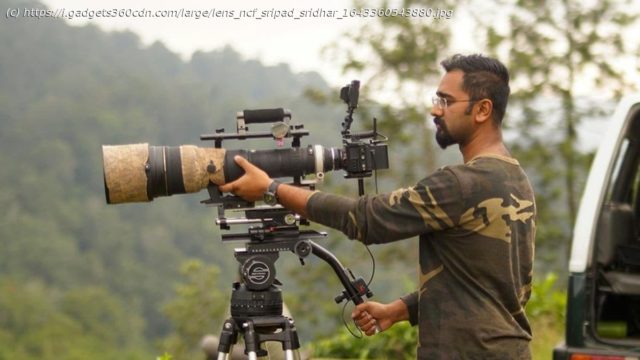Wildlife films as seen and experienced by people on TV are made by extremely sophisticated and expensive equipment. When your subjects are out of your control, the cameraperson and the gear have to be ever ready to capture moments when they happen, therefore the equipment used to shoot wildlife films and the people who operate them are of a different variety. Here is a guide to choosing the best wildlife filmmaking gear.
Wildlife films, as seen and experienced by people on TV, are captured with the help of extremely sophisticated and expensive equipment. These cool cameras and gadgets are operated by some of the world’s best cinematographers, but this does not mean you cannot get into the amazing world of wildlife filmmaking. By making the right gear choices and learning the right techniques, you too can capture some incredible natural history moments. When your subjects are out of your control, the cameraperson and the gear have to be ever ready to capture moments when they happen, therefore the equipment used to shoot wildlife films and the people who operate them are of a different breed, compared to your regular “wildlife shooters.” Gear that you can get started with: A RED Ranger camera with a Cinema 24mm prime lens Photo Credit: Sripad Sridhar The cameras combined with lenses usually have the greatest impact on the image being created, in the past Super 16 film cameras were the go-to for most professional wildlife film productions, this was followed by DV cameras/ ENG (electronic news gathering) cameras. These cameras, combined with powered zoom lenses, gave the flexibility and cost advantage required for wildlife film productions. Today, professional wildlife film productions use the same cameras as the ones used in blockbuster feature film productions like ARRI and RED cameras. Specific sequences which require smaller cameras opt for mirrorless video cameras, they also use specialty cameras like Infrared, thermal, and night vision technology. Though this sounds very expensive and out of reach for most people, good wildlife films at the end of the day tell stories and that can be done with most consumer grade digital cameras nowadays. Here are some things to look out for in a decent mirrorless video/stills camera that most people can buy for wildlife filmmaking: 1. A fairly good “high ISO” range Since most wildlife behavior happens during early mornings or late evenings, a camera with good low light performance is a must have, a camera which has the capability to shoot relatively clean, noise free video at higher ISO like ISO 800 to ISO 2500 or higher is a feature to look out for. 2. A high FPS setting Wildlife behaviour on field can change in a matter of seconds. Slow motion is an effect that everyone understands, a camera that can shoot 50 frames per second or higher is a great feature to look out for. This will allow you to slow the action down to see some interesting behavior that you may have failed to notice on field. Remember seeing the cheetah slow motion running sequence on TV, those were most likely shot on specialised high speed cameras shooting anywhere between 1,000fps or higher. Professional high speed cameras like the PHANTOM can shoot upto 12,500fps in full-HD (1,920×1,080 pixels) resolution. You only need 50fps to get started with. Not all cameras can do everything, some can shoot high fps but have poor low light performance, others might be great in low light but may not have great high fps options.






